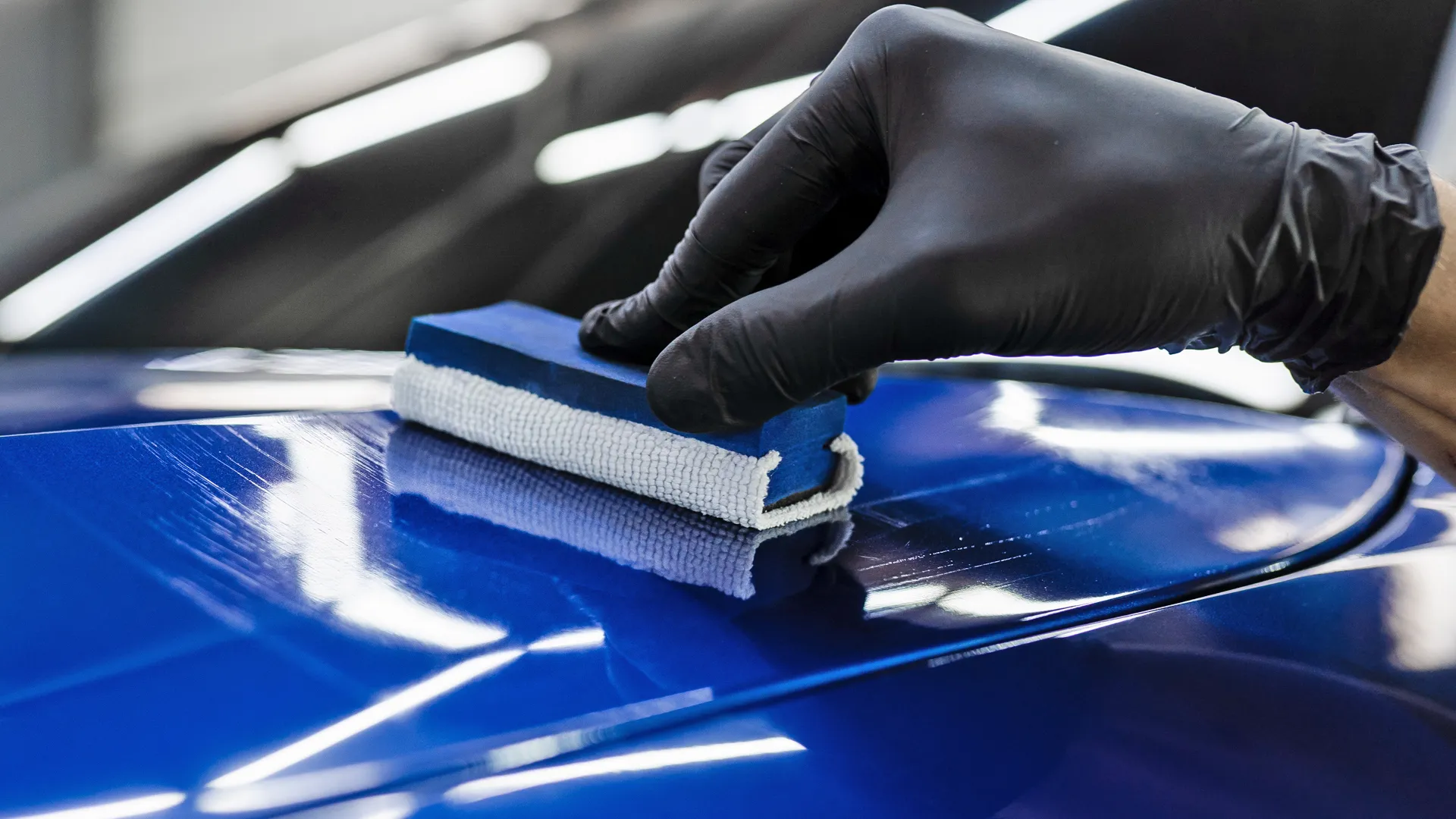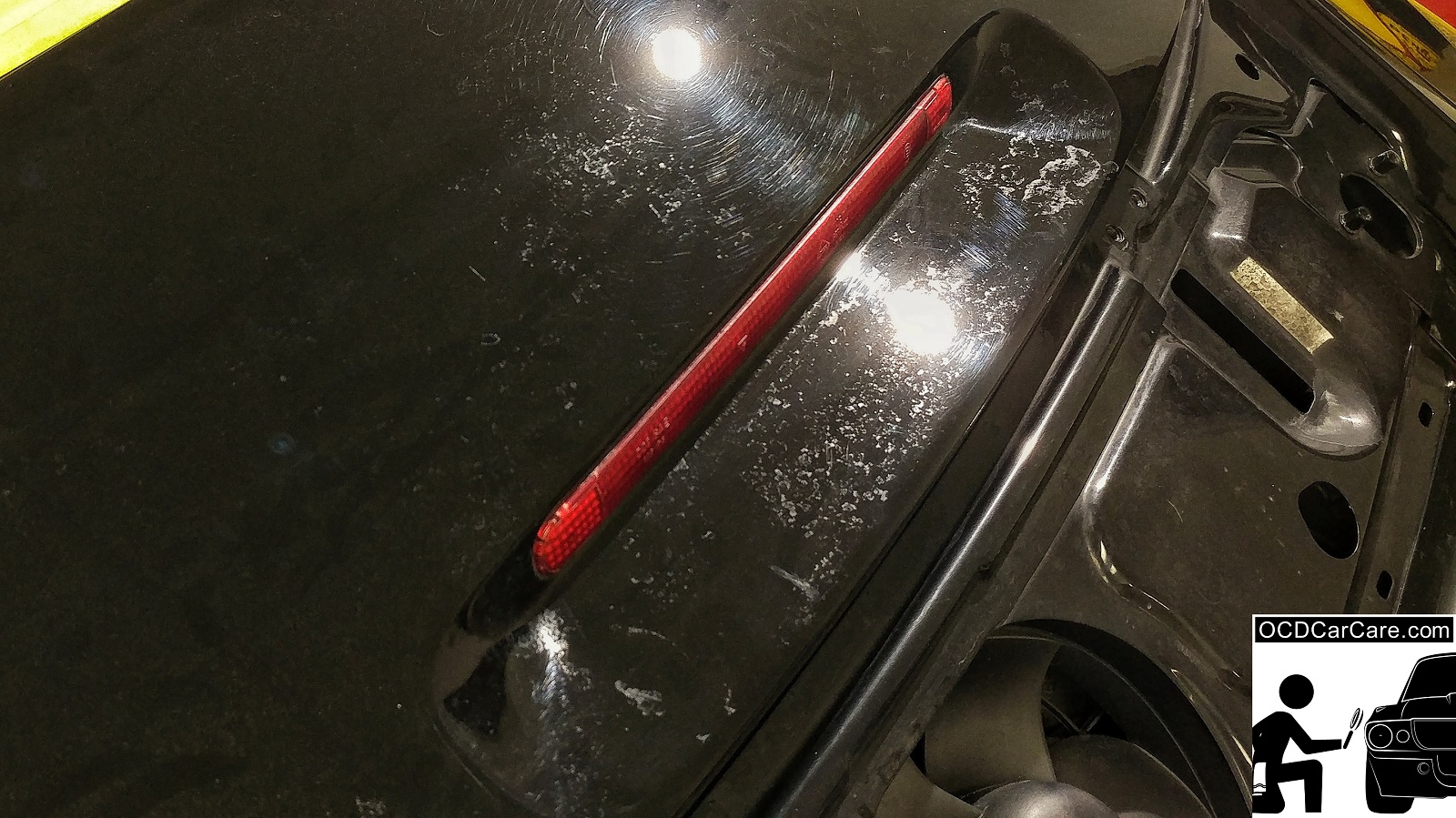The Step-by-Step Guide of Applying Ceramic Coating to Your Car
The Step-by-Step Guide of Applying Ceramic Coating to Your Car
Blog Article
Ceramic Coating vs. Conventional Wax: Which Uses Better Defense?
The discussion between ceramic finish and standard wax for vehicle security is one that values cautious examination, specifically in terms of longevity, resistance to environmental variables, and general maintenance needs. While ceramic finishes promise expanded durability and premium protection against a selection of threats, conventional wax might appeal to those seeking a much more budget-friendly, albeit temporary, solution.
Overview of Ceramic Covering
Ceramic finish has gained substantial appeal among auto enthusiasts and professionals alike for its advanced protective high qualities. This ingenious option contains a liquid polymer that chemically bonds to the lorry's manufacturing facility paint, forming a sturdy layer of security. Unlike traditional wax, which typically lasts for a couple of weeks to months, ceramic coatings can give durable protection for a number of years, depending on the item made use of and application approach.

While the first expense of ceramic covering may be greater than that of traditional wax, the lasting advantages, consisting of toughness and decreased upkeep frequency, often validate the investment. As auto modern technology remains to progress, ceramic layers have actually emerged as a favored choice for those looking for ideal protection and long life for their automobiles.
Overview of Typical Wax
The appeal of traditional wax depends on its simpleness and convenience of usage, making it a preferred option among vehicle proprietors looking for to boost their vehicle's appearance and provide a standard degree of protection. Generally stemmed from all-natural carnauba or artificial polymers, standard wax develops a slim protective layer over the paintwork. The application process is uncomplicated, usually entailing an easy buffing with a microfiber cloth, making it easily accessible to both novice and experienced customers.
Typical wax items are offered in various formulas, each developed to accommodate specific needs, such as improving shine or supplying water beading. The convenience of wax enables for use on different surface areas, consisting of paint, glass, and also plastic trim. While the application can be done by hand or machine, the secret is to make sure a clean surface for optimal bond.
Nonetheless, one remarkable characteristic of standard wax is its reasonably brief life-span compared to contemporary choices. Typically supplying security that lasts from a few weeks to a couple of months, constant reapplication is needed to maintain its performance. In spite of these restrictions, traditional wax continues to be a prominent selection for automobile lovers who value the aesthetic improvement it supplies.
Trick Security Attributes
When considering paint security for automobiles, it's necessary to comprehend the essential functions that distinguish conventional wax from advanced choices like ceramic finishes. Among the key safety characteristics of ceramic layers is their durability. Unlike wax, which generally lasts a few weeks, ceramic finishes can sustain for a number of years, supplying lasting security against ecological impurities.
Ceramic layers create a hydrophobic surface, try these out pushing back water and avoiding dust, grime, and other debris from adhering to the paint. This function not just boosts the automobile's look yet also decreases the regularity of washing. In addition, ceramic coatings use premium UV protection, securing the paint from dangerous sun exposure that can bring about fading and oxidation.
In contrast, standard wax provides a more short-lived barrier versus components but lacks the resistance to scrapes and chemical stains that ceramic coatings use. While wax can boost gloss, its protective capabilities are restricted, specifically against harsher environmental factors such as bird droppings, tree sap, and road salt. In summary, the crucial defense attributes of ceramic layers dramatically outshine those of standard wax, making them a superior option for long-lasting automobile treatment.
Application Process Contrast

In comparison, the application of ceramic finishings is more time-sensitive and complex, often calling for expert aid for ideal results. The car's surface area should be diligently cleaned, sanitized, and brightened to eliminate flaws before the coating is applied.
Ultimately, the selection in between wax and ceramic layer hinges not just on security levels yet additionally on the time, know-how, and resources readily available for their particular applications. - ceramic coating
Expense Evaluation and Long Life
Cost plays a considerable function in the decision-making process between ceramic layers and conventional waxes. Ceramic coatings commonly command a greater upfront financial investment, varying from $500 to $2,000 relying on the top quality, brand name, and expert application services. This initial cost can be credited to the innovative technology and materials used in ceramic formulations, which offer premium sturdiness and security.
In contrast, typical waxes are a lot more affordable, usually costing in between $20 to $100 for DIY applications. However, the longevity of wax items is limited, often requiring reapplication every few this content months to preserve their protective high qualities. This persisting expense can collect gradually, making wax less affordable in the long run.
Ceramic finishings, while more expensive initially, deliver long-lasting results, often exceeding two to 5 years with proper maintenance. This longevity can offer substantial savings with time, especially for automobile proprietors that prioritize security and aesthetic conservation - ceramic coating. Eventually, the selection between ceramic layers and conventional waxes ought to take into consideration both initial expenses and long-lasting value, factoring in the maintenance demands and wanted protection degree for the automobile
Final Thought
In recap, ceramic finishings offer superior protection for automobile paint compared to conventional wax, offering improved toughness, resistance to environmental elements, and hydrophobic residential or commercial properties. While the first financial investment for ceramic coverings is higher, their long life and reduced upkeep requirements warrant the expense. Eventually, for those looking for long-lasting automobile care and security, ceramic coverings stand for a much more reliable service than conventional wax, which uses just short-term benefits.
The argument between ceramic finishing and conventional wax for lorry protection is one that advantages mindful assessment, particularly in terms of toughness, resistance to ecological factors, and total upkeep needs.When considering paint defense for automobiles, it's necessary to recognize the essential functions that distinguish traditional wax from more innovative choices like ceramic coatings. In summary, the vital security features of ceramic layers considerably outperform those of conventional wax, making them a remarkable option for durable vehicle care.
Eventually, the option in between traditional waxes and ceramic finishings should think about both first expenses and long-lasting value, factoring in the upkeep needs and wanted security degree for the car.
In summary, ceramic layers provide premium defense for car paint contrasted to standard wax, offering boosted resilience, resistance to environmental factors, and hydrophobic homes.
Report this page